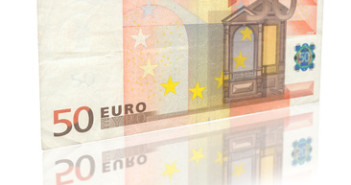EUR/USD lost over one cent on Thursday, and has dropped below the 1.29 level. The markets reacted negatively to remarks by Mario Draghi at a press conference on Thursday. Speaking after the ECB policy meeting, which maintained the benchmark interest rate at 0.50%, Draghi reiterated that the ECB’s monetary policy would remain accommodative as long as needed. It’s a quiet day in the Eurozone, with just two releases. French Trade Balance disappointed, dropping to a three-month low. German Factory Orders will be released later on Friday. Over in the US, the markets were closed for the July 4th holiday, and are back in action as the US releases Non-Farm Payrolls and the Unemployment Rate.Â
Here is a quick update on the technical situation, indicators, and market sentiment that moves euro/dollar.
EUR/USD Technical
- Asian session: Euro/dollar edged below the 1.30 line, touching a low of 1.2889 and consolidating at 1.2896. In the European session, the pair is unchanged.
Current range: 1.2840 – 1.2890.
Further levels in both directions:
- Below: 1.2840, 1.28, 1.2750 and 1.27.
- Above: 1.2890, 1.2940, 1.3050, 1.3100, 1.3160, 1.32, 1.3255, 1.3350, 1.34, 1.3434 and 1.3480.
- 1.2890 is providing weak resistance. 1.2940 is next.
- On the downside, there is weak support at 1.2840. This is followed by the round number of 1.2800.
Euro drops sharply after Draghi comments – click on the graph to enlarge.
EUR/USD Fundamentals
- 6:45 French Trade Balance. Estimate -45.B. Actual -6.0B.
- 10:00 German Factory Orders. Estimate 1.3%.
- 12:30 US Non-Farm Employment Change. Exp. 163K. . .
- 12:30 US Unemployment Rate. Exp. 7.5%.
- 12:30 US Average Hourly Earnings. Exp. 0.2%.
For more events and lines, see the EUR/USD.
EUR/USD Sentiment

- Draghi Pushes Euro Downwards: It’s a scenario we’ve seen before. The ECB rate decision meets expectations, and then Mario Draghi hosts a press conference and the euro dives. This was the case on Thursday, as the ECB maintained the key interest rate at 0.50%, as widely expected. However, at a follow-up press conference, Draghi stated that monetary policy would remain loose, and he did not foresee any hike in interest rates, given the low growth in the Eurozone. The markets reacted negatively to Draghi’s dovish comments, and the euro lost around one cent against the US dollar.
- US releases solid employment numbers: US employment data has looked solid this week. ADP Non-Farm Payrolls, an unofficial ADP Non-Farm Payrolls, an unofficial . The estimate stood at 161 thousand. Unemployment Claims, which were released ahead of the July 4th holiday, came in at 343 thousand, slightly below the estimate of 345 thousand. The markets will be hoping for further strong employment numbers on Friday, as the US releases Non-Farm Payrolls and the Unemployment Rate.
- Political crisis grips Portugal: It seems we can’t go for very long without a political crisis somewhere in the Eurozone. This time it’s Portugal, where the government is struggling to hold together. The country has been struggling with austerity measures as part of its bailout program, and the government was been rocked by the resignations of the finance and foreign ministers on Tuesday. With the country mired in the third year of a recession and unemployment at 18%, talk of a Euro-exit is bound to increase, which is bad news for the shaky euro. Prime Minister Pedro Passos Coelho insists that the government will survive and there will not be early elections, as demanded by the opposition.
- Spanish Employment Numbers Sparkle: It’s been a solid week for Spanish releases. The week started with Spanish Manufacturing PMI rising to the 50-point level for the first time since in two years. Spanish Unemployment Change was outstanding, dropping by 127.2 thousand. This easily beat the estimate of -83.5 thousand. The markets had expected a strong seasonal release, but this drop clearly beat all expectations. On Wednesday, Spanish Services PMI came in at 47.8 points, matching the forecast. This was in contrast to the Italian and Eurozone Services PMIs, which both fell short of their estimates.
- Greek bailout negotiations continue: The Greek bailout may have reached a snag, as officials in the Eurozone are voicing dissatisfaction with the lack of progress by Athens in implementing the bailout conditions, including budget cut shortfalls and cuts to the bloated public service. The next installment of bailout funds amounts to some EUR 8.1 billion, but these funds will not be delivered until the troika gives the go-ahead. Eurozone financial ministers meet on July 8, and the Greek bailout could be back in the news next week if an agreement is not reached.



